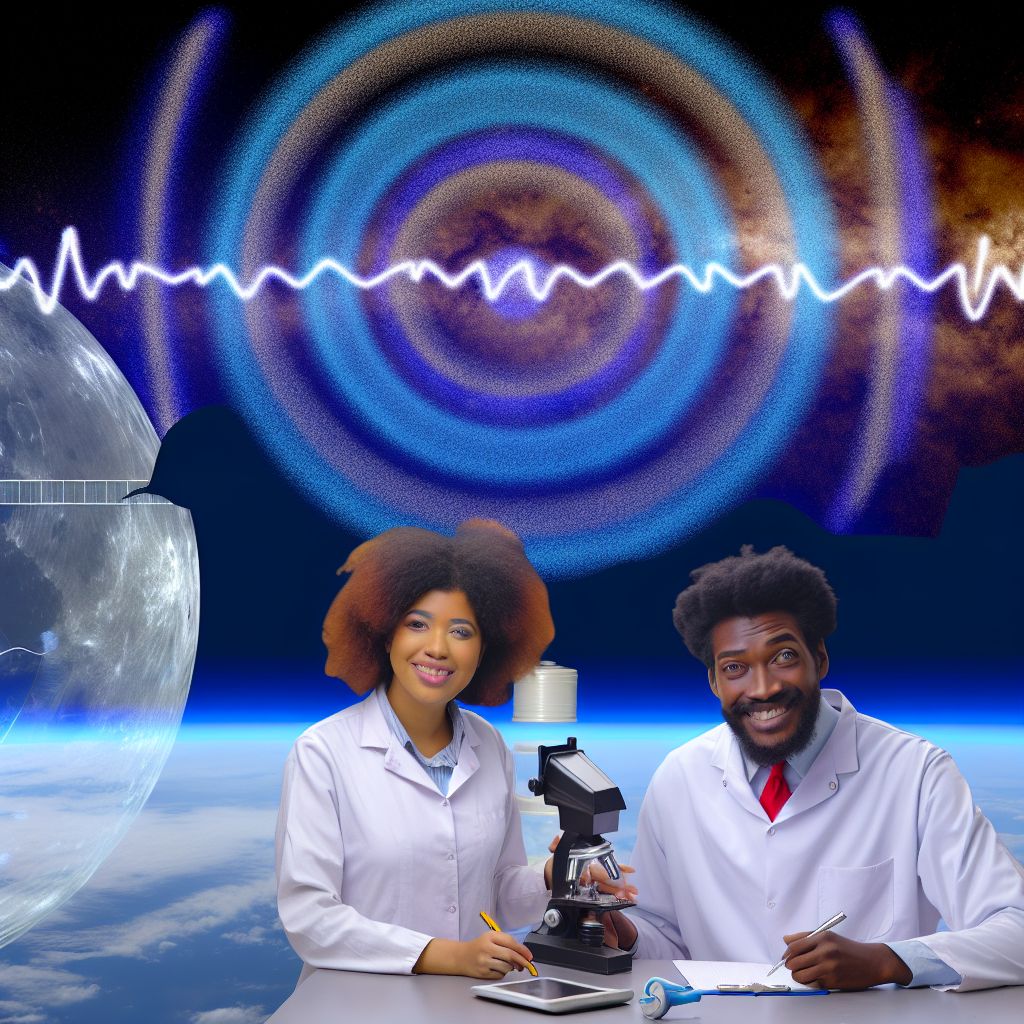Deutsch: Hertz / Español: Hertz / Português: Hertz / Français: Hertz / Italiano: Hertz
Hertz (Hz) in the Space industry context refers to the unit of frequency in the International System of Units (SI), used to measure the number of cycles per second of a periodic Phenomenon. This is especially relevant in terms of electromagnetic waves, including radio waves, which are extensively used for communication with and between Spacecraft, satellites, and Ground stations. One hertz represents one cycle per second. In space communications, frequencies are crucial for transmitting Data, voice, and Video across vast distances, with different frequency bands (measured in kilohertz (kHz), megahertz (MHz), and gigahertz (GHz)) serving specific purposes based on their propagation characteristics and the regulatory frameworks governing their use.
Description

In the space industry, hertz is a fundamental measure for designing, managing, and operating communication systems. The choice of frequency affects a mission's communication range, data rate, Power requirements, and Susceptibility to interference from cosmic sources or Earth-based signals. Higher frequencies, for example, allow for higher data rates but may require more power and are more affected by atmospheric conditions. Understanding and selecting the appropriate frequencies within the hertz spectrum is essential for successful mission planning and Operation.
Application Areas
The concept of hertz is applied in several key areas within the space industry, including:
- Satellite Communication: Utilizing specific frequency bands for broadcasting, telecommunication, and data services.
- Deep Space Communication: Employing high-frequency bands to communicate with Interplanetary spacecraft, ensuring data is transmitted and received over millions of kilometers.
- Telemetry and Command: Sending commands to and receiving data from spacecraft and satellites to Monitor and control their systems.
- Navigation and Timing: Using precise frequency standards for satellite navigation systems like GPS, GLONASS, Galileo, and BeiDou, which rely on the timing Accuracy determined by oscillators operating at defined hertz frequencies.
Well-Known Examples
- Deep Space Network (DSN): Uses frequencies in the S-band (2-4 GHz), X-band (8-12 GHz), and Ka-Band (26.5-40 GHz) for communication with distant space missions.
- Geostationary Satellites: Often operate in the C-band (4-8 GHz) and Ku-band (12-18 GHz) for weather Monitoring, television broadcasting, and internet services.
- Global Positioning System (GPS): Transmits in the L-band, specifically at 1.57542 GHz (L1 frequency) and 1.2276 GHz (L2 frequency), for civilian and military navigation and timing services.
Treatment and Risks
Managing frequency use involves addressing challenges such as:
- Spectrum Management: Coordinating frequency use to avoid interference between different satellites and terrestrial communication systems.
- Atmospheric and Cosmic Interference: Mitigating the effects of atmospheric conditions, solar Activity, and cosmic sources that can disrupt communications.
- Regulatory Compliance: Adhering to international agreements and national regulations governing the Allocation and use of frequency bands.
Similar Terms or Synonyms
- Frequency
- Electromagnetic spectrum usage
- Radio frequency (RF)
Weblinks
- industrie-lexikon.de: 'Hertz' in the industrie-lexikon.de (German)
Summary
In the space industry, hertz is a Critical measure for all aspects of electromagnetic communication and navigation, determining how data is transmitted and received across space and within Earth's Atmosphere. The effective use and management of frequencies, measured in hertz, are vital for the success and efficiency of space missions, highlighting the intricate relationship between space exploration and electromagnetic spectrum management.
--
Related Articles to the term 'Hertz' | |
| 'Frequency' | ■■■■■■■■■■ |
| Frequency typically refers to the number of oscillations or cycles per unit of time of a periodic signal . . . Read More | |
| 'Telecommunication' | ■■■■■■■■■■ |
| Telecommunication: In the aerospace context, telecommunications refers to the transmission of information, . . . Read More | |
| 'Radio frequency' | ■■■■■■■■■ |
| . . . Read More | |
| 'Satellite Communication' | ■■■■■■■■■ |
| Satellite Communication in the space industry context refers to the use of artificial satellites to transmit . . . Read More | |
| 'Transceiver' | ■■■■■■■■ |
| Transceiver in the space industry context refers to a combined transmitter and receiver unit used for . . . Read More | |
| 'LoRa' | ■■■■■■■■ |
| LoRa (short for Long Range) is a low-power, long-range wireless communication technology that is used . . . Read More | |
| 'Lasercom' | ■■■■■■■■ |
| Lasercom: Laser communication, or lasercom, is a technology that uses lasers to transmit data over long . . . Read More | |
| 'Laser Communication' | ■■■■■■■■ |
| Laser Communication: Laser communication in the space industry refers to the use of laser beams to transmit . . . Read More | |
| 'Antenna' | ■■■■■■■■ |
| An antenna (plural: antennas or antennae) is a device that is used to transmit or receive electromagnetic . . . Read More | |
| 'Communicator' | ■■■■■■■■ |
| Communicator in the space industry refers to devices or systems used for communication between spacecraft, . . . Read More | |
